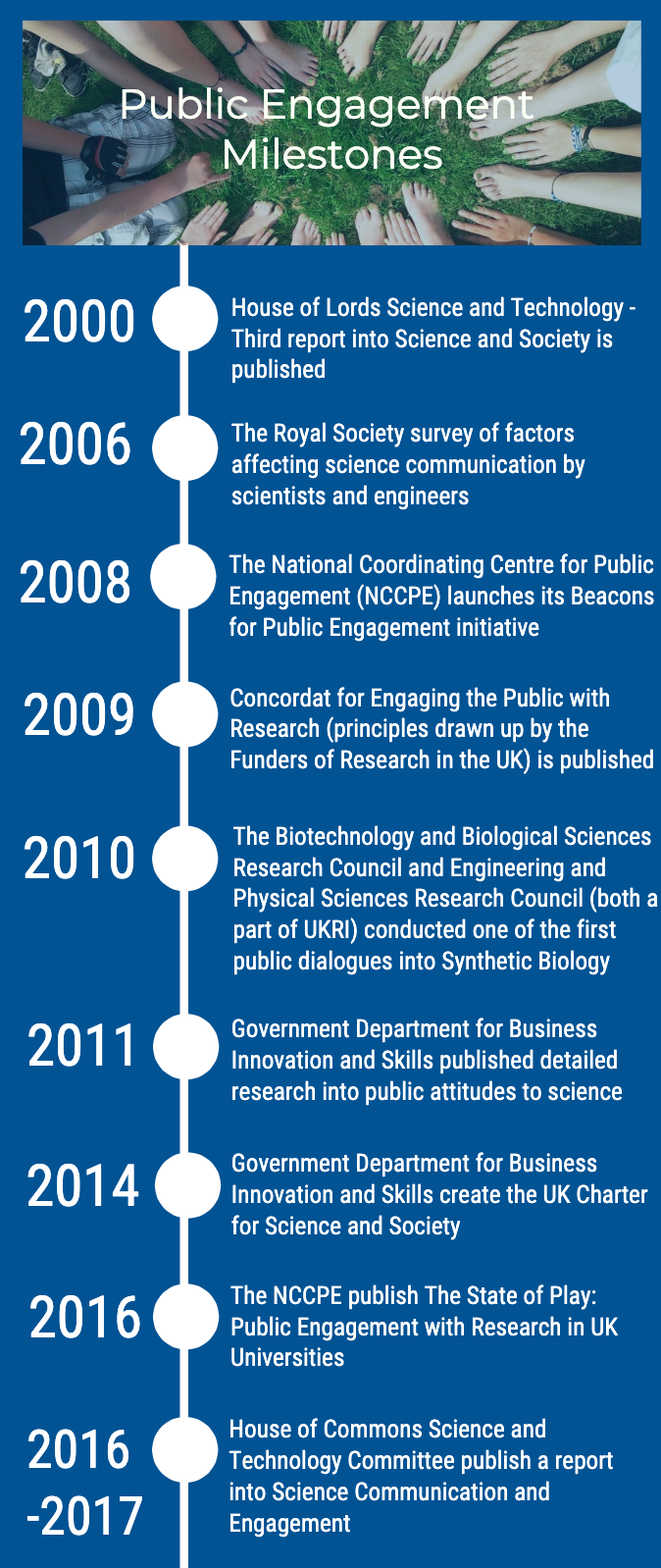The History and Politics of Science Communication
- Scicomm Hannah

- Nov 12, 2019
- 3 min read
As long as there has been science, there has been science communication. Without some form of dissemination, no one other than the individual researchers would know about their discoveries. Using this as a base line, one can argue that initial science communication took place on the academic to academic level. I simply make this assumption as now, in 2019, science communicators are still working on how best to encourage researchers to communicate their research beyond what some might say the ivory tower of academia.
Starting with its deficit model type beginnings in ancient Greece, where academics simply disseminated research through lecture style talks, (Illingworth, S, 2015), there has been significant developments in science and communication. Although I believe that it is more ‘modern’ developments in science communication that has seen a significant change, there are early elements of this practice that must not be overlooked. For example; 1805 saw Janet Marcet watch an academic talk and “translates” this into a conversational style piece based on her personal and practical experiences (Nerlich, B, 2018) and the 1830’s where Michael Faraday and Benjamin Humphrey Smart arguably developed the approach of audience centred science communication which we still use today. (Nerlich, B, 2018).
From these humble beginnings, science communication has come to reflect the ever increasing interdisciplinary and international research landscape. In my opinion, when reflecting upon the UK science communication landscape, there are significant milestones, mainly based around culture change. This appears to surround the increasing practice and development of public engagement with research, which I argue has shaped science communication to what it is today. It is my belief it is the more significant changes in science communication have come around since the start of the new millenia.

It is clear to see that publications from institutes are highly influential in the modern history of the growth of science communication. I find this of particular interest, as historically power of science communication has been situated with established institutions such as the Royal Society who published The Public Understanding of Science (1985). This list of identified milestones clearly shows the power of science communication and its developments, even in more modern times still lies within institutional walls.

It is not only the power of these well established science institutions that have shaped science communication, but also the surrounding political agenda and governmental role. Governments themselves have recognised their “pivotal role” in science communication, Science and Technology Committee (2017). Therefore, it can be seen that the investment made into these reports continue to show the understanding of the power and role institutions have in leading the way of science communication.
Overall when looking at the history of science communication it is clear to see that institutional power has been responsible for the development of what we see today. Without this driving force from the top it could be argued that little to no change would be made, with the NCCPE’s Beacons project (National Coordinating Centre for Public Engagement 2008) being an archetype of such concept. This is not to say that non-financial and non-governmental intervention and concepts have not shaped the landscape which researchers and science communication professionals currently work in, but these potentially smaller interventions are increasingly harder to capture and evidence leading towards culture change.
Bibliography.
Biotechnology and Biological Sciences Research Council (2010) Synthetic biology dialogue. Retrieved from: https://bbsrc.ukri.org/engagement/dialogue/activities/synthetic-biology/
Department for Business Innovation and Skills (2011) Public Attitudes to Science 2011. Retrieved from: https://www.gov.uk/government/publications/public-attitudes-to-science-2011-main-report
Hodges, J & Folkes, K (2014, 11, March) Introducing the Charter for UK Science and Society. [Blog Post] Retrieved from: https://scienceandsociety.blog.gov.uk/2014/03/11/hello-world/
House of Commons Science and Technology Committee (2017) Science communication and engagement. Eleventh Report of Session 2016–17. Retrieved from: https://publications.parliament.uk/pa/cm201617/cmselect/cmsctech/162/162.pdf
House of Lords, Science and Technology Committee (2000) Select Committee on Science and Technology Third Report. Retrieved from: https://publications.parliament.uk/pa/ld199900/ldselect/ldsctech/38/3802.htm
Illingworth, Sam (2015,6, February) A Brief History of Science Communication [Blog post] Retrieved from: https://blogs.egu.eu/geolog/2015/02/06/a-brief-history-of-science-communication/
National Coordinating Centre for Public Engagement (2008) Beacons for Public Engagement. Retrieved from: https://www.publicengagement.ac.uk/nccpe-projects-and-services/completed-projects/beacons-public-engagement
National Coordinating Centre for Public Engagement (2016) The State of Play: Public Engagement with Research in UK Universities. Retrieved from: https://www.publicengagement.ac.uk/sites/default/files/publication/state_of_play_final.pdf
Nerlich, B (2018, 16, October) Triangulating the history of science communication: Faraday, Marcet and Smart. [Blog post] Retrieved from: https://hiphilangsci.net/2018/10/16/triangulating-history-scicomm/
Science and Technology Committee (2017) Science Communication and Engagement. Retrieved from: https://publications.parliament.uk/pa/cm201617/cmselect/cmsctech/162/16206.htm
The Royal Society (1985) The Public Understanding of Science. Retrieved from: https://royalsociety.org/~/media/Royal_Society_Content/policy/publications/1985/10700.pdf
The Royal Society (2006) Science Communication. Survey of factors affecting science communication by scientists and engineers. Retrieved from: https://royalsociety.org/-/media/Royal_Society_Content/policy/publications/2006/1111111395.pdf
UK Research & Innovation (2009) Concordat For Engaging the Public with Research. Retrieved from: https://www.ukri.org/files/legacy/scisoc/concordatforengagingthepublicwithresearch-pdf/


Comments